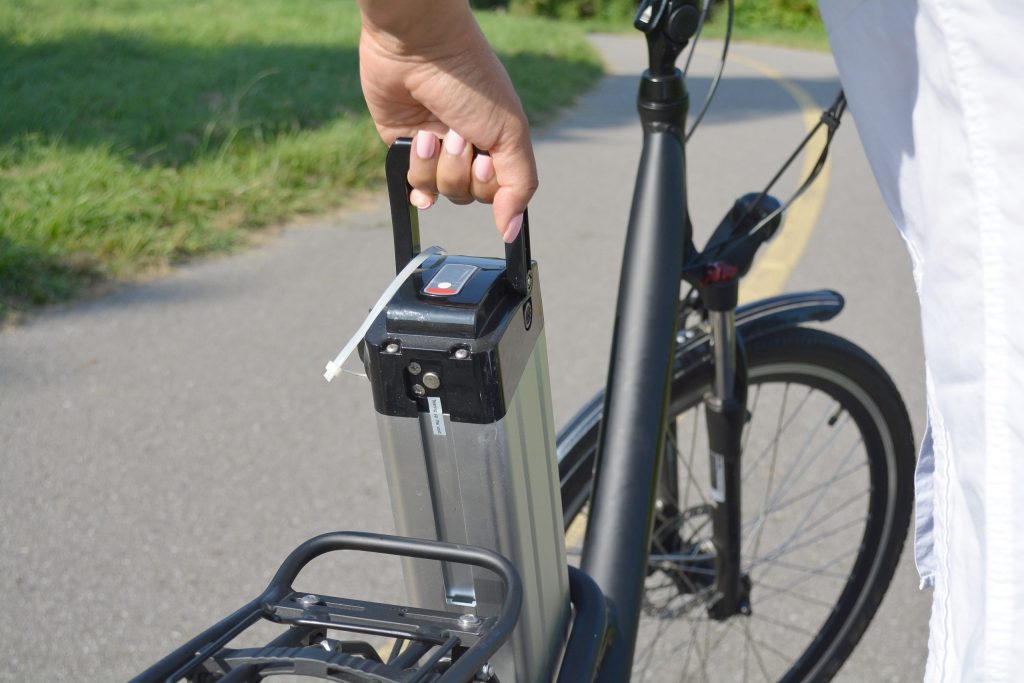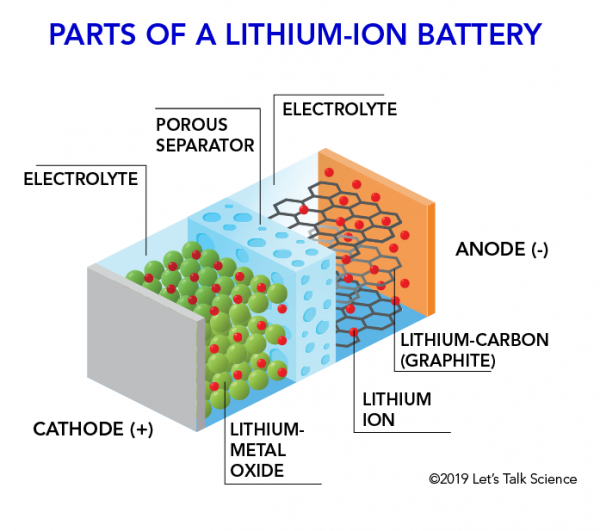When choosing an e-bike there are many features to consider, such as tires, display options, motors, and batteries.
Of course, you won’t take the battery for granted especially if your e-bike is not a hybrid and won’t allow you to paddle when the battery is dead.
So, in our article today, we will be discussing e-bike batteries and what you should consider before deciding which battery is the best one for you.
What you should pay attention to in a battery
When selecting a battery for your electric bike, it’s crucial to consider several factors. The most critical factor is the Amps, which is the unit of electrical current, and a higher Amp rating means a larger battery. Additionally, the battery’s capacity is measured in Amperes per hour or Ah, which is the unit of electrical charge. Another crucial factor to consider is the power output, measured in watts (W), where a higher wattage rating means a more powerful battery. The watts per hour (Wh) unit refers to the power output over a specified time frame, with a discharge rate of 100W for two hours resulting in usage of 200Wh. Finally, it’s essential to consider the battery’s voltage (V), which measures the electrostatic potential difference between two conductors, with a recommended electric bike battery voltage reading of 400 volts.
What ate the types of e-bike batteries?
There are many types of batteries to choose from for your e-bike. We will be discussing the features of each type so you can choose correctly.
Lead Acid Batteries
This is your cheaper option, however, there’s a trade-off, we know they are cheaper, but also heavier and with less power output. Also, they have less capacity when compared to other types of batteries.
So why choose them? Well, they are pretty decent as backup power for immobile applications.
It’s also worth mentioning that they are three times heavier than lithium batteries and two times heavier than nickel batteries, and the maximum capacity of a lead-acid battery is half of both lithium and nickel batteries.
Let’s see some better options…
Nickel-cadmium Batteries
The pros of these batteries can be summed up in a couple of words, they are strong, have more battery capacity, and with proper maintenance, can last for a very long time.
Let’s focus on strong, those batteries have excellent load performance and they can withstand much pressure from the throttle.
There are some shortcomings, they have a very shocking self-discharge rate and can go as low by as much as 70% in 24 hours after a full charge without usage. They have low power density as well.
The nickel-cadmium batteries are considered a bit expensive too and the main component, which is cadmium, contributes badly to the environment.
Lithium-ion Batteries
Lithium-ion batteries have become the standard battery of choice for e-bikes today, powering approximately 90% of all e-bikes available. They are capable of producing a greater power output for their weight compared to other battery types and are also known for their durability and longer lifespan. There are three main types of Lithium-ion batteries, each with some differences, but all with the common feature of lasting longer. However, they are small and need functioning electronic components to prevent issues such as catching fire or self-destruction, although manufacturers typically have safety measures in place to prevent accidents. It is important to handle and maintain them correctly. While they can be expensive, Lithium-ion batteries are recommended for use in electric bikes due to their ideal range, weight, longevity, and other features. Here are the three types of Lithium-ion batteries.
This particular lithium battery is just like any other lithium-ion battery in terms of weight, price, and range. But here’s the deal – because it’s made of polymer, it can be molded into all kinds of shapes that’ll make your head spin. And get this – there’s no liquid inside, which means that it provides more stability. That makes it perfect for low-power stuff like electric bikes. So if you want to ride in style and have a chill time, go with a lithium-ion battery.
-
Lithium Cobalt batteries
Offering maximum power with lightweight and high reliability, still, those batteries are considered a bit old, and they are believed to have a higher energy density than other lithium batteries.
-
Lithium Manganese batteries
They have good levels of durability and range, and they last longer than other Lithium batteries.
Final Thoughts about e-bike batteries
Think of your options thoroughly and make sure to figure out the trade-offs when comparing e-bike batteries. You don’t just go with the cheaper option, nonetheless, you should consider the efficient and lightweight options.
Hope this little guide helped you figure out what you need to do before choosing an e-bike battery.
Read more: What are e-bikes how to choose one?
Conclusion:
In the pursuit of finding the perfect e-bike, careful consideration of various features is essential, and among them, the e-bike battery plays a pivotal role. As we explored in this article, understanding the nuances of e-bike batteries is crucial before making a decision.
Choosing the right battery requires a focus on key factors such as Amps, capacity (Ah), power output (W), watts per hour (Wh), and voltage (V). These metrics collectively determine the efficiency, power, and range of the battery, ensuring a seamless and satisfying riding experience.
There are different types of e-bike batteries available in the market, each with its unique set of characteristics. Lead Acid batteries, though economical, may not be the ideal choice for those seeking lightweight and high-capacity options. Nickel-cadmium batteries offer strength and durability but come with self-discharge issues and environmental concerns. However, the lithium-ion family, including Lithium-ion Polymer, Lithium Cobalt, and Lithium Manganese batteries, emerges as the preferred choice for modern e-bikes.
Among these, Lithium-ion batteries, in general, have become the standard for their lightweight design, durability, and long lifespan, powering a significant percentage of e-bikes. While Lithium-ion Polymer batteries offer flexibility in shape, Lithium Cobalt batteries provide maximum power with lightweight design, and Lithium Manganese batteries offer good durability and range.
As riders weigh their options, it’s crucial to consider not just the cost but also the efficiency and weight of the battery. In this pursuit, To7Motor emerges as a leading player, offering cutting-edge e-bike batteries that align with the diverse needs and preferences of riders.
To7Motor’s commitment to innovation and excellence is evident in their range of e-bike batteries. Whether riders prioritize power, range, or a lightweight design, To7Motor has a solution to enhance their electric biking experience. As you embark on the journey of choosing an e-bike battery, consider the trade-offs and make an informed decision that aligns with your preferences and riding style.
In the ever-evolving world of electric biking, To7Motor stands as a reliable partner, delivering not just e-bikes but a holistic riding experience that combines innovation, performance, and sustainability. Choose To7Motor for a ride that goes beyond the ordinary, powered by state-of-the-art e-bike batteries.






